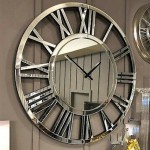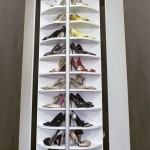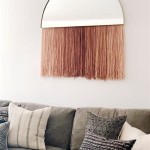Selecting Mirrors for Above Bathroom Vanities: A Comprehensive Guide
The selection of a mirror for above a bathroom vanity is a crucial element in both the functionality and aesthetic appeal of the space. Carefully considering various factors, including size, shape, style, and lighting integration, is paramount to achieving a balanced and visually pleasing bathroom environment. This article provides a detailed examination of the key considerations when selecting mirrors for bathroom vanities, ensuring a harmonious blend of practicality and design.
Determining the Appropriate Size and Shape
The size of the mirror should be proportionally aligned with the dimensions of the vanity. A mirror that is too small can appear insignificant and fail to provide adequate reflection, while an oversized mirror can overwhelm the space and detract from other design elements. Generally, the width of the mirror should be approximately equal to or slightly less than the width of the vanity. For double vanities, options include using a single large mirror spanning the entire length, or installing separate mirrors above each sink.
The height of the mirror is another important consideration. It should be tall enough to provide adequate reflection for users of varying heights. A general guideline is to position the bottom edge of the mirror a few inches above the backsplash, allowing enough space for cleaning and preventing water damage. The top edge should ideally be positioned at a height that allows most users to see their reflection comfortably.
The shape of the mirror can significantly impact the overall aesthetic of the bathroom. Rectangular mirrors are a classic and versatile choice, offering a clean and symmetrical look. Round or oval mirrors can soften the angular lines of the vanity and add a touch of elegance. Arched mirrors can introduce a sense of height and visual interest, while asymmetrical shapes can create a more contemporary and artistic feel. The shape should complement the style of the vanity and the overall design of the bathroom.
When selecting the shape and size of the mirror, it's also prudent to consider the architectural features of the bathroom. If the bathroom has low ceilings, a vertically oriented rectangular or arched mirror can help to create the illusion of height. In contrast, a horizontally oriented mirror can visually widen a narrow bathroom. Consider the placement of light fixtures and other bathroom accessories when determining the optimal size and shape of the mirror to ensure a cohesive and balanced design.
Evaluating Style and Framing Options
The style of the mirror should harmonize with the overall design aesthetic of the bathroom. A modern bathroom may benefit from a sleek, frameless mirror or a mirror with a minimalist metal frame. A traditional bathroom might call for a mirror with a decorative wood frame or an ornate gilded frame. A rustic bathroom could be enhanced by a mirror with a reclaimed wood frame or a metal frame with an industrial look.
Frameless mirrors offer a clean and contemporary look, blending seamlessly with any style. They are easy to clean and maintain, and their minimalist design can help to create a sense of spaciousness. Framed mirrors add a touch of personality and character to the bathroom. The frame can be made of various materials, including wood, metal, plastic, or composite materials. The frame's finish and design should complement the other fixtures and finishes in the bathroom, such as the faucets, lighting, and cabinetry.
Consider the color and texture of the frame when making a selection. A light-colored frame can brighten up a small bathroom, while a dark-colored frame can add a touch of drama and sophistication. A textured frame can add visual interest and depth to the design. The frame should be durable and resistant to moisture, especially in a high-humidity environment like a bathroom. Some frames are specifically designed for bathroom use and are treated to prevent warping, cracking, or discoloration.
Beyond standard framing options, consider more unique and decorative approaches. Beveled edges on frameless mirrors add a subtle touch of elegance and reflect light beautifully. Incorporating tile or mosaic elements around the mirror creates a custom and personalized look. Antique or vintage mirrors can add character and charm to a bathroom, especially in a period-style setting. The framing option should enhance the overall design and reflect the individual style of the homeowner.
Integrating Lighting for Optimal Functionality
Adequate lighting is essential for tasks performed at the vanity, such as applying makeup, shaving, and grooming. The placement and type of lighting around the mirror can significantly affect the quality of the reflection and the overall ambiance of the bathroom. Insufficient or poorly placed lighting can create shadows and make it difficult to perform these tasks accurately.
Sconces mounted on either side of the mirror provide balanced and flattering illumination. The height of the sconces should be positioned at eye level to minimize shadows and provide even lighting. The distance between the sconces should be wide enough to provide ample coverage across the face. Consider using sconces with adjustable arms to customize the direction of the light.
Overhead lighting, such as a vanity light bar or recessed lighting, can provide general ambient light. However, overhead lighting alone can cast unflattering shadows under the eyes and chin. It is best to combine overhead lighting with sconces or other side lighting to achieve a balanced and well-lit vanity area. Ensure that the overhead lighting is bright enough to illuminate the entire vanity space, but not so bright that it creates glare.
Mirrors with integrated lighting offer a convenient and streamlined solution. These mirrors have built-in LED lights that provide direct and even illumination. Some models also feature adjustable brightness and color temperature settings, allowing users to customize the lighting to their preferences. Integrated lighting can be a particularly useful option for small bathrooms where space is limited.
When selecting light fixtures for the vanity area, consider the color temperature of the bulbs. Warm white light (2700-3000K) creates a cozy and inviting atmosphere, while cool white light (3500-4000K) provides a more neutral and task-oriented illumination. Daylight white light (5000-6500K) closely mimics natural daylight and is ideal for tasks that require accurate color rendering, such as applying makeup. Select bulbs with a high Color Rendering Index (CRI) to ensure that colors are accurately represented.
Smart mirrors are increasingly popular, offering advanced features such as integrated lighting, voice control, and display screens. These mirrors can display information such as weather updates, news headlines, and appointments, adding a touch of convenience and technology to the bathroom. Smart mirrors can also be connected to other smart home devices, allowing users to control their lighting, music, and other settings with voice commands.
Considering Functionality and Special Features
Beyond aesthetics and lighting, certain functional considerations should be taken into account when selecting a mirror for above a bathroom vanity. Heated mirrors, for example, prevent fogging in humid environments, ensuring a clear reflection even after a hot shower. This feature is particularly useful in bathrooms with poor ventilation.
Magnifying mirrors, either as part of a larger mirror or as separate wall-mounted units, are valuable for tasks such as applying makeup or grooming. These mirrors provide a close-up view, allowing for greater precision. Magnification levels vary, so select a magnification level that is appropriate for the intended use.
Mirrors with built-in storage are a practical solution for small bathrooms. These mirrors typically have recessed shelves or cabinets behind the mirror, providing concealed storage for toiletries and other bathroom essentials. This helps to keep the vanity area clutter-free and organized.
Tilt mirrors offer adjustable viewing angles, allowing users to customize the angle of reflection. This can be particularly useful for users of different heights or for accommodating specific tasks. Tilt mirrors are available in various styles and sizes, and can be mounted on the wall or on the vanity countertop.
When selecting a mirror, consider its ease of cleaning and maintenance. Mirrors with smooth, non-porous surfaces are easier to clean and less prone to staining. Avoid mirrors with intricate frames or decorative elements that can trap dust and dirt. Use a soft, lint-free cloth and a gentle glass cleaner to clean the mirror regularly.
Finally, ensure that the mirror is securely mounted to the wall using appropriate hardware. Consult a professional if necessary to ensure that the mirror is installed safely and securely. Consider the weight of the mirror and the type of wall (e.g., drywall, plaster, tile) when selecting mounting hardware. Proper installation is essential to prevent the mirror from falling and causing injury or damage.

How To Pick And Hang The Perfect Bathroom Mirror Roomhints

How To Pick And Hang The Perfect Bathroom Mirror Roomhints

27 Bathroom Mirror Ideas For Every Style Wall Decor

How To Pick And Hang The Perfect Bathroom Mirror Roomhints

How To Pick The Right Size Mirror Antique Glass Ltd

30 Bathroom Mirror Ideas To Accompany Your Vanity

Antique Mirrors In A Bathroom Adding Charm Character

Two Black Oval Mirrors Lit By Clear Glass Sconces Hang Over A Gray Marble Countertop Fitted Mirror Bathroom Hanging Lights

Guide To Hanging Bathroom Vanity Lighting And Mirrors Liven Design

How To Pick And Hang The Perfect Bathroom Mirror Roomhints








